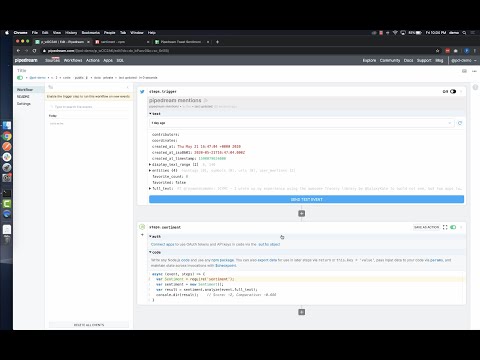What do you want to automate
with UptimeRobot and Google Sheets?
Prompt, edit and deploy AI agents that connect to UptimeRobot, Google Sheets and 3,000+ other apps in seconds.
Trusted by 1,000,000+ developers from startups to Fortune 500 companies
Popular Ways to Connect UptimeRobot with Google Sheets#
Popular UptimeRobot and Google Sheets Triggers#
Emit new event each time a comment is added to a spreadsheet.
Emit new event each time a row or rows are added to the bottom of a spreadsheet.
Emit new event each time a row or rows are added to the bottom of a spreadsheet.
Emit new event each time a row or cell is updated in a spreadsheet.
Popular UptimeRobot and Google Sheets Actions#
Add a single row of data to Google Sheets. See the documentation
Add multiple rows of data to a Google Sheet. See the documentation
Update an existing monitor's status to pause or resume monitoring. See the documentation
Overview of UptimeRobot#
The UptimeRobot API allows you to monitor the uptime of websites and services, sending alerts for any downtime detected. With Pipedream, you can harness this API to create tailored notifications, generate uptime reports, and synchronize with incident management tools. By leveraging Pipedream's capabilities, you can integrate UptimeRobot with a myriad of services to automate responses to uptime changes, streamline communication processes, and maintain a pulse on your web infrastructure's health.
Connect UptimeRobot#
import { axios } from "@pipedream/platform"
export default defineComponent({
props: {
uptimerobot: {
type: "app",
app: "uptimerobot",
}
},
async run({steps, $}) {
const data = {
"api_key": `${this.uptimerobot.$auth.api_key}`,
}
return await axios($, {
method: "post",
url: `https://api.uptimerobot.com/v2/getAccountDetails`,
data,
})
},
})
Overview of Google Sheets#
The Google Sheets API allows for the creation, reading, updating, and deletion of data within Google Sheets, enabling a robust platform for spreadsheet management and data manipulation. Through Pipedream, you can craft serverless workflows that respond to various triggers, such as webhook events, emails, or scheduled times, to interact with Google Sheets. This synergy can automate reporting, synchronize data across applications, manage inventory, track leads in a CRM, or even conduct survey analysis by updating and retrieving sheet data on the fly.
Connect Google Sheets#
import { axios } from "@pipedream/platform"
export default defineComponent({
props: {
google_sheets: {
type: "app",
app: "google_sheets",
}
},
async run({steps, $}) {
return await axios($, {
url: `https://www.googleapis.com/oauth2/v1/userinfo`,
headers: {
Authorization: `Bearer ${this.google_sheets.$auth.oauth_access_token}`,
},
})
},
})
Related Videos#



Community Posts#


